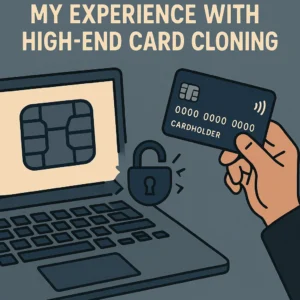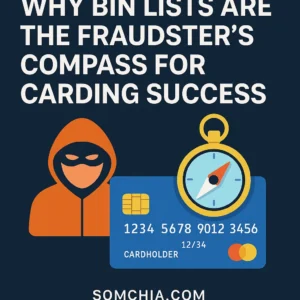Inside the Mind of a Digital Predator: How I Broke the Rules and Bent the Game to My Will
I wasn’t born into this world of zeros and ones. I clawed my way in, blindfolded, bruised by trial and error. You think you know what cybercrime is because you read headlines or hear whispers in Discord servers—but let me tell you something: carding isn’t a method, it’s a mindset. A psychology. A lifestyle built on misdirection, cold logic, and an unapologetic hunger for more.
So when I read some noob crying out, “Can someone help me fix my carding method? I don’t wanna waste my money”—it hits me like déjà vu. Because I was him. But the difference? I evolved. And now I’ll show you what it really takes to turn your method into money.
The Rookie Blueprint: Why Most Carders Burn Before They Earn
Let’s start with the basics. Here’s the so-called “method” he laid out:
-
Buy a PayPal log with money already inside
-
Buy a stolen credit card (CC)
-
Link the CC to the PayPal account
-
Start spending—phones, ebike kits, food
-
Hope there’s no limit, pray it all works
You see the problem already, right?
This is the thinking of someone who’s still stuck in step-mode carding—following instructions like it’s a recipe. But cyber fraud isn’t baking. It’s warfare. And you’re stepping into a battlefield littered with IDS traps, heuristic analysis, behavioral analytics, device fingerprinting, velocity checks, and AI fraud detection that learns faster than you do.
You don’t outsmart systems by linking cards to logs and clicking “checkout.”
You become the system.
Stage One: Stop Thinking Like a Shopper. Start Thinking Like a Ghost.
When you sit down to card, your first enemy isn’t the bank. It’s your own digital footprint.
PayPal? That’s not just a payment processor. It’s a snitch. It logs device ID, browser type, cookies, IP history, transaction patterns, and behavioral movement. They know how long you hover over the mouse. They know if your scroll speed is consistent with a real user or a synthetic identity.
And you’re gonna roll in there with a stolen CC, a VPN, and hope?
That’s why 95% of carders fail.
Let me break it down for you.
The Hardcore Setup: What You REALLY Need to Survive in 2025
Before you even log into that PayPal account, here’s your minimum viable toolkit:
Antidetect Browser / FraudFox / Multilogin / Sphere
Each one is built to spoof browser environments—OS, fonts, screen res, canvas fingerprinting, WebGL, timezone, languages. Every element must match the user profile of your target victim. Because fraud detection is profiling. And mismatched profiles = instant flags.
️ Clean Proxy / Residential IPs Only
VPNs are dead. Datacenter IPs scream “fraud” in the logs. If you’re not using rotating residential proxies, you’re a flashing red light to the system. No TOR. No sketchy free VPNs. Use paid, regional proxies that match the victim’s address.
MAC Address Spoofing
You can’t bring your real device into a heist. Change your MAC. Every session. That’s layer zero. Without it, you’re leaving a breadcrumb trail from your real machine to the log you just bought.
Age-Consistent Behavior
Let’s say the Fullz you grabbed is for a 58-year-old male from Wisconsin. You better not be clicking ads for Supreme, trying to buy an electric skateboard, and logging in at 2:00AM from Romania.
That’s not OPSEC. That’s suicide.
The PayPal + CC Combo Trap
Here’s where most rookies burn out.
You buy a PayPal log with cash in it. You think you’re golden. Then you try to link a CC—thinking, “Boom, extra funds.” But PayPal doesn’t see it that way.
They score the trust level of every added payment method based on previous user behavior, account age, regional match, and whether that CC has been flagged anywhere else in their ecosystem.
Linking a stolen CC to a compromised log isn’t a flex. It’s a red flag.
Rule #1: Never link more than one foreign CC to a single log.
Rule #2: If you must, clone the environment of the original owner perfectly.
Rule #3: Never assume PayPal is stupid. Their system is smarter than most people.
Spending Limits and Shadow Bans
The original poster asked: “Is there a limit? I think it’s like $2,000?”
Let me tell you about shadow thresholds.
Payment processors don’t need to ban you outright. They let you spend until you hit a backend fraud threshold—then freeze everything silently. You’re not locked out. You’re just wasting time, building evidence, and letting them log everything for later.
This is where psychological warfare comes in.
You want to cash out $5,000?
Break it into 3-day patterns. Buy low-risk, normalized items. Wait. Then strike fast, big, and exit the scene.
Strike. Wait. Hit. Vanish.
Smart Carding = Psychological Engineering
Here’s a dark truth you won’t hear in telegram channels:
Carding isn’t about tech. It’s about psychology.
You’re not hacking a bank. You’re hacking trust.
You’re impersonating a real human being in a digital world ruled by AI watchdogs and pattern-matching algorithms. That means your timing, language, click behavior, cart items, even typos—they all matter.
If the original account holder had 300 transactions for eBay gardening tools and you suddenly buy crypto hardware wallets and an ebike? You just screamed FRAUD in 50 different machine-learning dialects.
You want to last in this game? Learn how to become invisible.
The New Game: AI Detection in 2025
You think you’re fighting humans? Think again.
In 2025, Mastercard’s Decision Intelligence, Paypal’s Risk Graph, Stripe Radar, and Visa Advanced Authorization all rely on neural networks to catch your ass mid-transaction.
They analyze session entropy, session duration, and mouse movement precision to detect whether you’re synthetic, bot-based, or high-risk.
This is the era of adaptive fraud prevention.
To beat it, you need:
-
Pattern disruption (always vary behavior)
-
Obfuscation layers (spoofed environments, modified user agents)
-
Consistency (age-appropriate, region-consistent, believable profiles)
And most importantly…
A Backup Exit Strategy
Real pros never go in without an escape route.
If the account gets locked? You clone the environment, wipe the session, and shift to a new alias.
If you’re dumb enough to use the same proxy for multiple jobs, same device ID, same keystroke signature? You’ll get network-linked across platforms, across services, across logs.
That’s how fraud rings get taken down.
Always operate in isolated compartments.
Never reuse digital DNA.
Your OPSEC is your oxygen. Treat it like it’s the only thing keeping you alive.
Beyond PayPal: The Rise of Crypto Carding and CEX Bypasses
The game has evolved. If you’re still trying to buy iPhones on eBay using PayPal, you’re stuck in 2018.
In 2025, the real wolves are targeting:
-
Crypto exchanges (onboarding + KYC spoofing)
-
Wallet drainers via phishing
-
SIM-swap + recovery exploits
-
Token approval exploits
-
Web3 bridges with low audit coverage
Combine a good Fullz with stolen selfies and deepfake tools, and you’ve got a verified Binance or Coinbase account in under 24 hours.
Why bother with phones when you can launder $50K in crypto using Tornado Cash forks or cross-chain obfuscators?
The game’s changed. Adapt or die.
Conclusion: If You Wanna Win, Burn the Playbook
This isn’t a lifestyle for cowards or copycats.
Carding is warfare. Digital trench combat. The moment you follow someone else’s script, you’re already dead. The method is never about what tools you use—it’s about how well you disguise your intent, blend in, and vanish before the lights come on.
So to that rookie asking for help fixing his method?
Don’t fix your method. Destroy it. Rebuild it. Rewire your thinking.
Forget spending limits and stolen CCs.
Start thinking in terms of behavioral footprints, attack surfaces, and neural deception.
You don’t need another PayPal log.
You need mental armor.
Because in this world, there are only two types of players:
Those who get caught… and those who reappear under a new name.
Choose wisely.




